[Editor’s Note: The U.S. Army Futures Command (AFC) and Training and Doctrine Command (TRADOC) co-sponsored the Mad Scientist Disruption and the Operational Environment Conference with the Cockrell School of Engineering at The University of Texas at Austin on 24-25 April 2019 in Austin, Texas. Today’s post is excerpted from this conference’s Final Report (see link at the end of this post), addressing how the Army must embrace and rapidly incorporate autonomy, robotics, and Artificial Intelligence (AI) into our force modernization efforts. In the words of former Deputy Secretary of Defense Mr. Bob Work, this is an “Own the Night Moment for the United States Army” — enjoy!].
“When you’re bogged down in war it will naturally limit your ability to think about the future.”
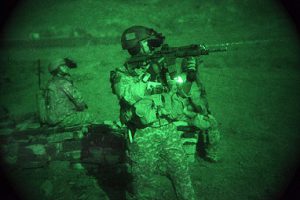 In the late 1970s, following the end of the Vietnam War, U.S. operational planners started to ponder how to “Fight Outnumbered and Win.” Toward this end, the Army vowed to “Own the Night” – to leverage technology and training to successfully conduct offensive night operations with a level of familiarity and comfort commensurate with daytime operations. Further, nighttime defensive capabilities of other nations were 10 percent of what they would be during the day.1
In the late 1970s, following the end of the Vietnam War, U.S. operational planners started to ponder how to “Fight Outnumbered and Win.” Toward this end, the Army vowed to “Own the Night” – to leverage technology and training to successfully conduct offensive night operations with a level of familiarity and comfort commensurate with daytime operations. Further, nighttime defensive capabilities of other nations were 10 percent of what they would be during the day.1
Today, the Army is facing a similar “Own the Night” moment. To ensure future battlefield overmatch, the Army has a unique opportunity to seize the initiative in an openly competitive technological space — Artificial Intelligence (AI) and robotics — rather than succumb to forced modernization from a point of strategic disadvantage. There are four conditions underpinning this new “Own the Night” imperative:
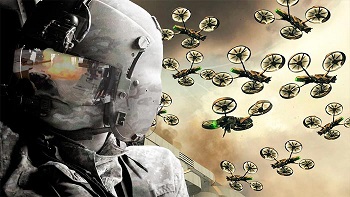 1. The proliferation of miniaturized guided munitions and democratization of other military technologies will make the battlefield increasingly lethal for humans, hastening the development of unmanned autonomous systems to take on the most deadly combat tasks – dull, dirty, and dangerous.
1. The proliferation of miniaturized guided munitions and democratization of other military technologies will make the battlefield increasingly lethal for humans, hastening the development of unmanned autonomous systems to take on the most deadly combat tasks – dull, dirty, and dangerous.
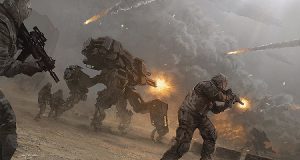 2. Humans are becoming more expensive to recruit, train, and retain, hastening the move to unmanned and robotic systems to replace them, especially for ground forces.
2. Humans are becoming more expensive to recruit, train, and retain, hastening the move to unmanned and robotic systems to replace them, especially for ground forces.
 3. Land warfare involves fighting amongst the people, requiring the most demanding performance for autonomous systems in terms of ethics, Law of Armed Conflict – distinction and proportionality –, and trust.
3. Land warfare involves fighting amongst the people, requiring the most demanding performance for autonomous systems in terms of ethics, Law of Armed Conflict – distinction and proportionality –, and trust.
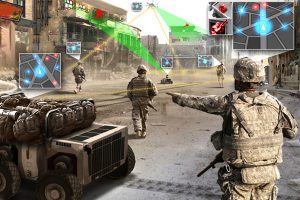 4. Future combat operations may occur in dense urban settings, where combat operations will rely heavily on human-machine combat teams. The pervasive presence of the Internet of Things (IoT) provides a bevy of information to both the robotic agents as well as their human counterparts.2
4. Future combat operations may occur in dense urban settings, where combat operations will rely heavily on human-machine combat teams. The pervasive presence of the Internet of Things (IoT) provides a bevy of information to both the robotic agents as well as their human counterparts.2
Gaps in the global competition for development of AI and robotics are quickly narrowing. Strategic competitors recognize the importance of AI, particularly to match and overtake the superior military capabilities that the United States  and its allies have held for the past several decades. Highlighting this importance, Russian President Vladimir Putin in 2017 stated that “whoever becomes the leader in this sphere will become the ruler of the world.”3 Russian military forces have already combat tested unmanned combat ground vehicles in Syria, applying lessons learned to future iterations of unmanned and autonomous combat systems.4
and its allies have held for the past several decades. Highlighting this importance, Russian President Vladimir Putin in 2017 stated that “whoever becomes the leader in this sphere will become the ruler of the world.”3 Russian military forces have already combat tested unmanned combat ground vehicles in Syria, applying lessons learned to future iterations of unmanned and autonomous combat systems.4  Within the past decade, China has invested heavily in government-funded AI initiatives. Military thinkers within the Chinese People’s Liberation Army (PLA) embrace AI’s prospects as “leapfrog technology” that would allow China to skip technological development stages and rapidly overmatch U.S. capabilities.5
Within the past decade, China has invested heavily in government-funded AI initiatives. Military thinkers within the Chinese People’s Liberation Army (PLA) embrace AI’s prospects as “leapfrog technology” that would allow China to skip technological development stages and rapidly overmatch U.S. capabilities.5
U.S. success in this competition is dependent upon focus (R&D dollars and manpower concentration), adaptability (organizational flexibility and external partnerships), and innovation (creativity, integration, and cultural awareness). While the U.S. pursues its next iteration of “Owning the Night,” it will need a more defined strategy that focuses beyond developing and purchasing new generations of technology. Emerging technologies such as AI and robotics will require a continued investment by the Army and Department of Defense with clear strategic guidance for all stakeholders. As with the first “Own the Night” moment, the Army will also need to include development of new tactics, techniques, and procedures (TTPs) and intense, sustained training.
The Army can gain multiple advantages by developing unmanned, optionally tele-operated systems rather than optionally manned systems, such as:
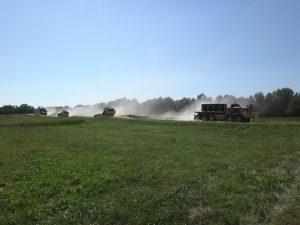
-
-
- Moving to the right side of the cost curve by avoiding investment in expensive armor and other human protection features.
- Achieving greater performance – speed, agility, maneuverability – and energy efficiency without humans on board.
- Creating greater warfighter effectiveness through increased man-machine teaming.
-
Robotic and unmanned systems are prevalent throughout the six Army modernization priorities – Long-Range Precision Fires; Next Generation Combat Vehicle; Soldier Lethality; Future Vertical Lift; Army Network; and Air and Missile Defense.6 Integration of unmanned robotic systems into all of these priorities is an opportunity for the Army to “Own the Night” and gain overmatch in Multi-Domain Operations (MDO).
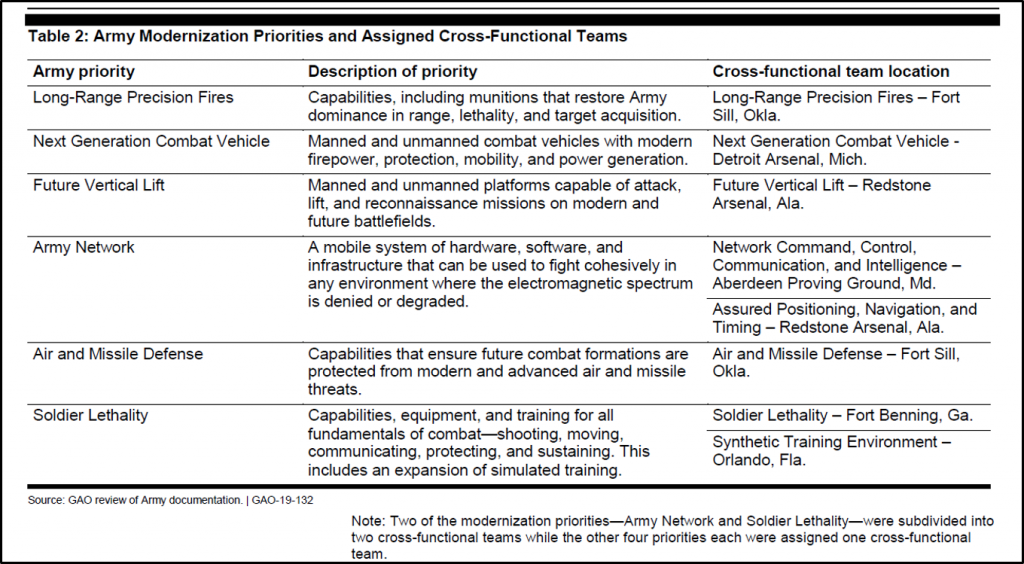
If you enjoyed this post, please also see:
– The entire Mad Scientist Disruption and the Operational Environment Conference Final Report, dated 25 July 2019.
– Former Deputy Secretary of Defense, Mr. Bob Work‘s presentation from the aforementioned conference on AI and Future Warfare: The Rise of the Robots (and Army Futures Command), as well as his Modern War Institute podcast assessing the future battlefield.
– Our Crowdsourcing the Future of the AI Battlefield #AIBattlefield information paper.
–The Guy Behind the Guy: AI as the Indispensable Marshal, by Mr. Brady Moore and Mr. Chris Sauceda.
–Autonomous Robotic Systems in the Russian Ground Forces, by Mr. Samuel Bendett.
1 Adam K. Raymond “‘We Own the Night’: The Rise And Fall Of The US Military’s Night-Vision Dominance,” Task & Purpose, https://taskandpurpose.com/night-rise-fall-us-militarys-night-vision-dominance
2 Work, Robert O., Mad Scientist Conference: Disruption and the Future Operational Environment, University of Texas at Austin, 24 April 2019.
3 James Vincent, “Putin Says the Nation that Leads in AI ‘Will be the Ruler of the World,’” The Verge, https://www.theverge.com/2017/9/4/16251226/russia-ai-putin-rule-the-world
4 Kendrick Foster, “The Modern Pen and the AI Sword,” Harvard Politics Review, https://harvardpolitics.com/united-states/pen-ai-sword/
5 Gregory C. Allen “Understanding China’s AI Strategy,” Center for a New American Security, https://www.cnas.org/publications/reports/understanding-chinas-ai-strategy
6 “Modernization Priorities for the United States Army,” 3 Oct. 2017, https://admin.govexec.com/media/untitled.pdf




The battlefield dominance tenets provoke thought. The media and popular hype for robotics over-emphasizes the benefit and under-emphasizes the vulnerability of robots to battlefields. Too often, it seems like TRADOC and others look backwards instead of forward. A battlefield dependent on electronic signals is vulnerable to contemporary countermeasures. A force dependent on robotics and technology will find the leveling of the technology battlefield limits the function. The second tenet addressing the expense of training humans for war is an inevitable consequence of national security and freedom. It is part of the future with or without technical augmentation. It would seem that the augmented warrior would be the focus, not the toys they play with. That includes the ability to deliver lethal and nonlethal effects with precision in any environment.